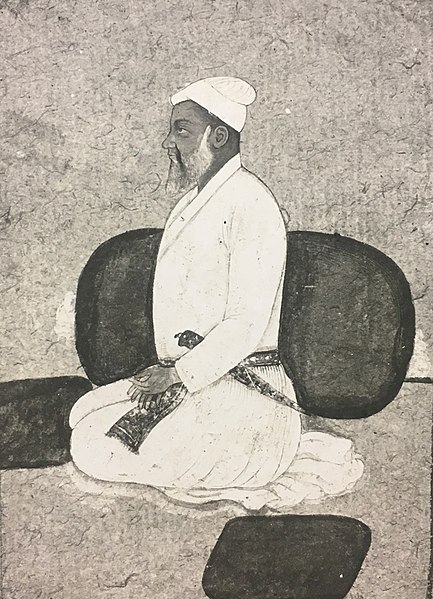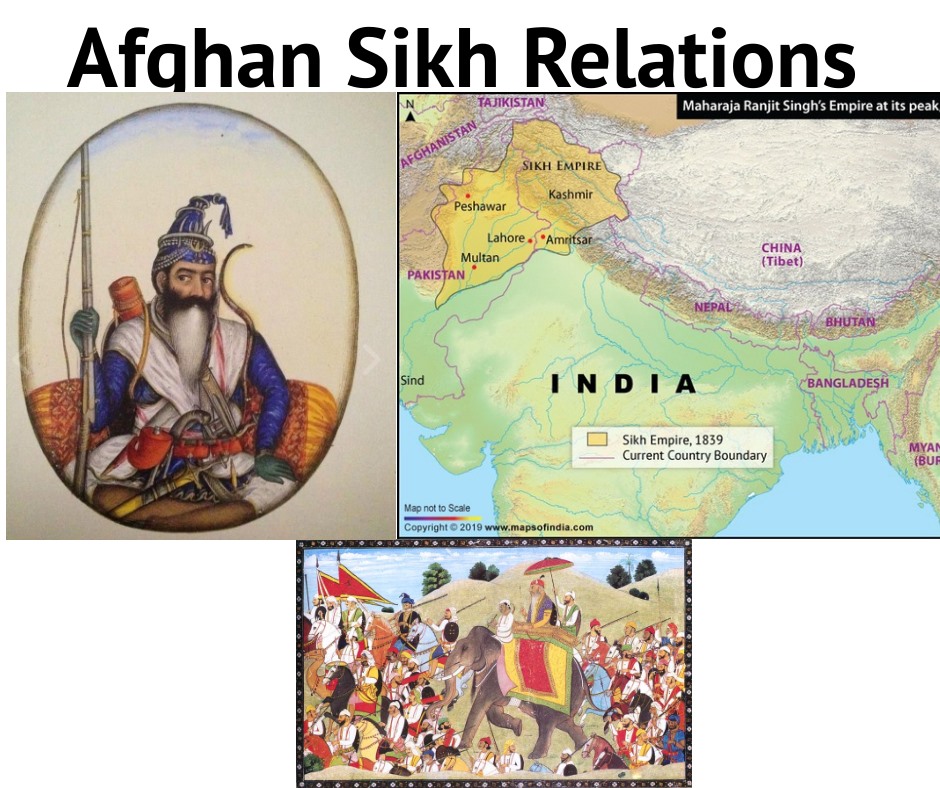ADINA BEG KHAN (d. 1758), governor of the Punjab for a few months in AD 1758, was, according to Ahwal-i-Dina Beg Khan, an unpublished Persian manuscript, the son of Channu, of the Arain agriculturalist caste, mostly settled in Doaba region of the Punjab. He was born at the village of Sharakpur, near Lahore, now in Sheikhupura district of Pakistan. Adina Beg was brought up in Mughal homes, for the most part in Jalalabad, Khanpur and Bajvara in the Jalandhar Doab. Starting his career as a soldier, he rose to be collector of revenue of the village of Kang in the Lohian area, near Sultanpur Lodhi.
BAGHAR SINGH, BHAI, killed in 1740, was the youngest son of Bhai Alam Singh Nachna, of Duburji village in Sialkot district, a warrior in Guru Gobind Singh\'s retinue at Anandpur. His elder brothers, Mohar Singh and Amolak Singh, too, were soldiers and are believed to have died fighting along with their father in the battle of Chamkaur on 7 December 1705. As he grew up, Baghar Singh also joined the ranks of the Khalsa.
DEVA SINGH, SIR (1834-1890), a highranking Patiala state administrator, was born in 1834 into an Arora Sikh family, the son of Colonel Khushal Singh, a brave soldier who had once killed a tiger (sher, in Punjabi) near one of the city gates conferring upon it the name Sheranvala which lasts to this day. Deva Singh received the only formal education available at that time by attending a maktab or Persian school, and entered Patiala state service at a very early age in 1846. In 1853, he was appointed assistant judicial minister and in 1855, a Risaldar in a cavalry unit.
FATUHAT NAMAH-I-SAMADI, an unpublished Persian manuscript preserved in the British Library, London, under No. Or. 1870, is an account of the victories of `Abd us-Samad Khan. Nawab Saifud Daulah `Abd usSamad Khan Bahadur Diler Jang was appointed governor of the Punjab by the Mughal Emperor Farrukh-SIyar on 22 February 1713, with the specific object of suppressing the Sikhs who had risen under Banda Singh commissioned by Guru Gobind Singh himself, shortly before his death, to chastise the tyrannical rulers of Punjab and Sirhind.
Discover Jai Singh Atarivala's intriguing life as a soldier and diplomat under Maharaja Ranjit Singh, marked by alliances and plots in 19th century Punjab.
Discover the legendary tale of Mahant Kirpal Das, the Udasi prelate who fought valiantly in the Battle of Bharigam alongside Guru Gobind Singh.
Explore the distinguished career of Mota Singh, Sardar Bahadur, in Maharaja Ranjit Singh's service and his contributions during the Anglo-Sikh wars.
Discover the heroic tales of Sukkha Singh, an 18th-century Sikh warrior from Amritsar, known for his bravery, perseverance, and enduring legacy.
Dive into the gripping ballad of Guru Gobind Singh's battle at Nirmohgarh, showcasing vivid warrior tales in Punjabi, renowned for its historical depth.
AFGHAN SIKH RELATIONS spanning the years 1748 to 1849 go back to the first invasion of India by Ahmad Shah Durrani, although he must have heard of the Sikhs when in 1739 he accompanied Nadir Shah, the Iranian invader, as a young staff officer. Having occupied Lahore after a minor engagement fought on 11 January 1748 during his first invasion of India, Ahmad Shah advanced towards Sirhind to meet a Mughal army which he was informed was advancing from Delhi to oppose him. On the way he had two slight skirmishes at Sarai Nur Din and at the Vairoval ferry, both in present day Amritsar district, with a Sikh jatha or fighting band under Jassa Singh Ahluvalia.







